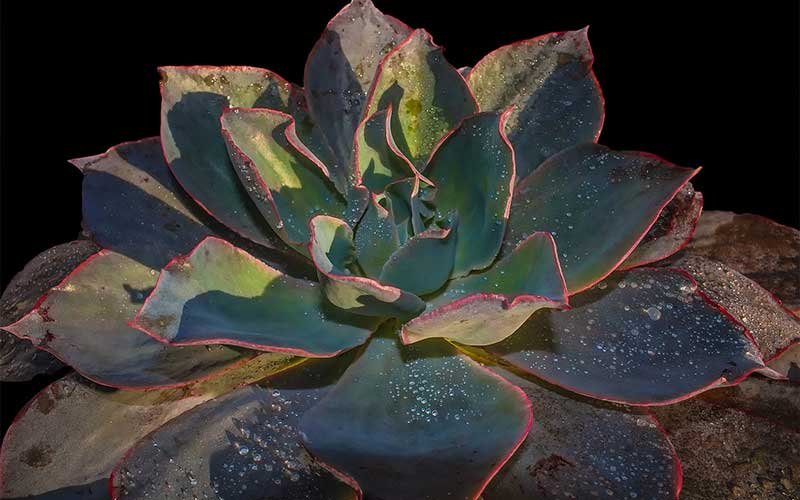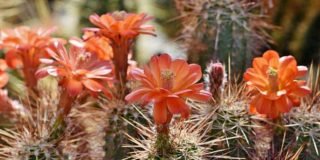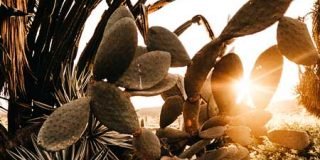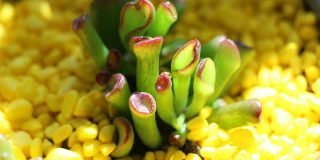Contents

- Succulents that are dormant in summer awaken and start growing again
- The mild, warm weather promotes growth
- The ideal time to propagate is when the plant is growing
- To refresh succulents that have grown exceedingly lush and unkempt in the course of the long, hot summer
- You will give your succulents enough time to grow before winter, which will prepare them to be healthy and thriving for the spring season
Succulent Dormancy
Succulents fall into two categories when it comes to dormancy. Those that become dormant in summer stop growing from mid to late summer and start growing in winter. During dormancy, they prefer little water, indirect light, and absolutely no fertilizers. As autumn sets in and the weather become cooler, summer dormant plants will continue growing, and flowers will start to emerge.
Winter-dormant succulents, on the other hand, thrive mainly in spring and autumn and sleep in winter. However, most succulents take every opportunity to grow. This means they will continue to grow in whatever season as long as their environment allows them to.
For example, a summer dormant plant might still put on some new growth in mild summer weather but will go completely dormant when the temperature rises. Crassula succulents are summer dormant plants but also put on new growth in summer when the conditions allow them.
Propagating in Autumn
You can quickly grow your winter dormant succulents during early autumn, so we recommend that you prioritize propagating your summer dormant succulents during this season. Here are some of the most common summer dormant succulents that usually grow in autumn to early spring:
Aeoniums
Aeoniums originate from the Canary Islands. They have striking rosettes, and their leaves grow out of a single stem. Their stems can be long or short, and their offshoots emerge from a single flowerhead. Aeoniums come in a variety of colors, shapes, and sizes. They are monocarpic, which means they die after producing flowers.
Aeoniums can withstand cold and go dormant in scorching and dry weather. When they go dormant, Aeoniums curl and drop their leaves to avoid water loss.

Kalanchoe
Kalanchoes are native to Africa and are prevalent in North American households. It thrives in low-light conditions. Typically, kalanchoes need 14 hours of lightless condition to bud and bloom. It blooms in late winter to late spring, and grow dormant as lighting increases.
Dudleya
This succulent is native to North America, where the weather is generally warm. Its color ranges from green to gray and looks similar to echeveria. Some Dudleya lives for twenty to over one hundred years. They come in varying colors, sizes, and leaf shapes.
It is essential to refrain from watering them during the summer when they grow dormant. Dudleyas reawaken from drought-induced dormancy when fall or the winter rain sets in. Their leaves immediately plump up, their growth resumes, and the flower comes in spring.
The list of summer-dormant succulents also includes Aloe, Crassula, Gasteria, Peperomia, Haworthia, Sedeveria, Sedum, and Senecio. The crisp weather of autumn signals these succulents to wake up and exit summer dormancy, and prepare for the coming spring season.
Propagation
You can propagate summer dormant succulents in autumn through offshoots, leaf cuttings, or stem cuttings. Here is a guide on propagating your succulents during autumn season:
- Get a healthy cutting or offshoot from the parent plant.
- Place the cutting or offshoot away from direct sunlight, where it will dry for a couple of days.
- After five to ten days, insert the cutting or offshoot in a pot of fresh soil mix.
- Put the pot in an area where it gets filtered light. Shield it from direct sunlight to avoid dehydrating the leaves.
- Water the soil without splashing on the stem or leaves of the plant.
- After two weeks, check for rooting by gently tugging on the plant. If the cutting or offshoot doesn’t move, it means it has formed roots.
- As your plant matures, it will become more drought-tolerant so that you can water it less frequently.









